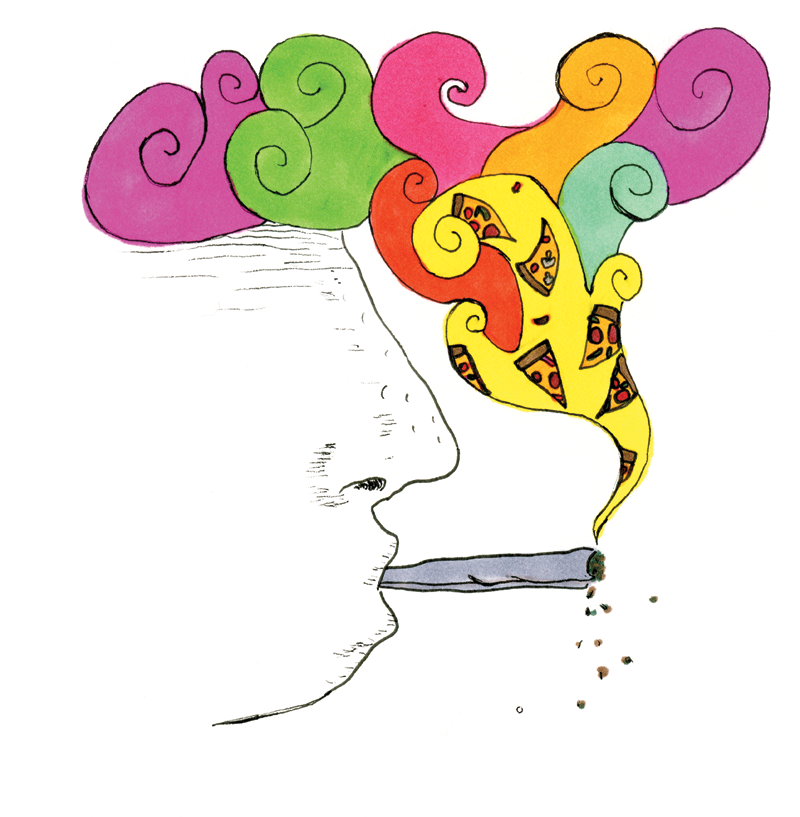Check out Daily Texan Multimedia's portrayal of this week's Science Scene.
The past 100 years have shown a major shift in the public’s perception of marijuana. What we now understand to be a fairly mild drug was once considered a major threat to society, as reflected in popular entertainment of the time. In the 1936 cult hit “Reefer Madness,” two innocent teenagers turn into sex-crazed murderers after experimenting with the drug. In the climax of Whit Masterson’s novel “Badge of Evil,” the villains inject a character with marijuana (which in reality requires an IV) until she’s no longer the same person. Indeed, even James Bond helped spread the propaganda. In the novel “Casino Royale,” he describes a gunman’s killer instinct, noting that it could only have come from a drug. Which drug? “Marihuana, decided Bond.”
Our views have relaxed since then. If we see pot in a movie, it’s more likely to be smoked by Harold and Kumar than by a serial killer. Nowadays, no other illegal drug is as popular as marijuana, with one in 15 high school seniors admitting to smoking nearly every day. The drug, rather than inducing violence, does exactly the opposite, offering feelings of elation, lowered inhibitions and an increased appetite, all of which peak around 15 to 45 minutes after inhalation. First-time users might not respond to it at all, since marijuana offers an unusual “reverse tolerance” that sometimes requires multiple attempts before feeling the high. However, once this high is attained, it can even be reached using placebo cigarettes.
On the whole, the high is safe, albeit mildly addictive. Animal research suggests that a lethal dose of marijuana is about 40,000 times larger than what one inhales during typical usage, and even an overdose is rarely cause for alarm — users may feel sick, but still usually recover within a few hours without any medical assistance.
Though safe in terms of lethality, marijuana doesn’t come without risks. The drug affects short-term memory, the ability to think and concentrate and perception of time and coordination, though the permanence of these effects is unclear. While mice given doses of tetrahydrocannabinol (THC, the major active chemical absorbed into the blood) suffer from impaired short-term memory, they soon recover without lasting damage.
A systematic review, however, found that frequent smokers are approximately twice as likely as non-users to suffer from mental illnesses such as depression or schizophrenia later in life. This may be a result of confusing correlation and causation — those at risk for these diseases may also be more likely to find themselves drawn to Mary Jane’s tempting glare, but it’s still something frequent users should be aware of.
The links between marijuana and cancer also can’t be ruled out, but if there is an increased risk that comes with using the drug, it’s not immediately obvious from epidemiological studies. Marijuana features many of the same carcinogens as tobacco, but few people smoke the equivalent of a pack or more a day, so the risk is mitigated. One study did report an eightfold increase in lung cancer among pot-aficionados, though the experiment could have had better controls and, for comparison, a lifetime of heavy tobacco smoking can increase lung cancer risk by more than 40 times.
Ultimately, though, it comes down to costs and benefits. Marijuana has negative effects that users should be aware of, but it also has many positive qualities. The drug helps some people deal with stress and has also assisted many great artists and scientists who credit the drug for aiding their creativity. Additionally, marijuana has been used medically to help patients cope with, among other things, the nausea and lack of appetite that accompanies chemotherapy treatments. Moderation is key, particularly when dealing with drugs, and if you or anybody you know is letting pot get in the way of their life instead of enhancing it, it’s time to back off.
One shouldn’t need recreational drugs to enjoy life, but many find that responsible marijuana use improves their short stay on this planet. We only have one shot at life — it’d be a shame to let fear of a few risks stand in the way of living it to its fullest.





















